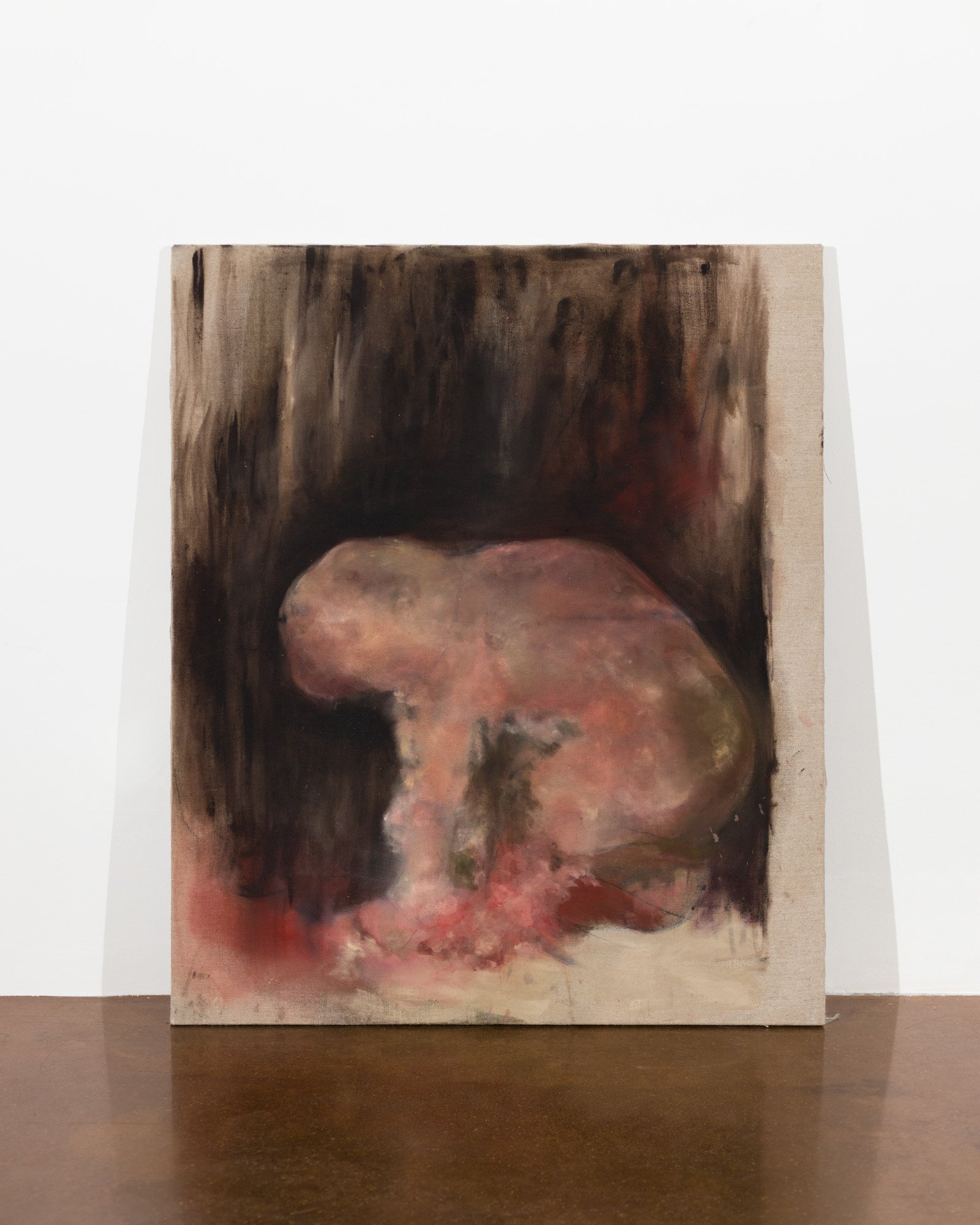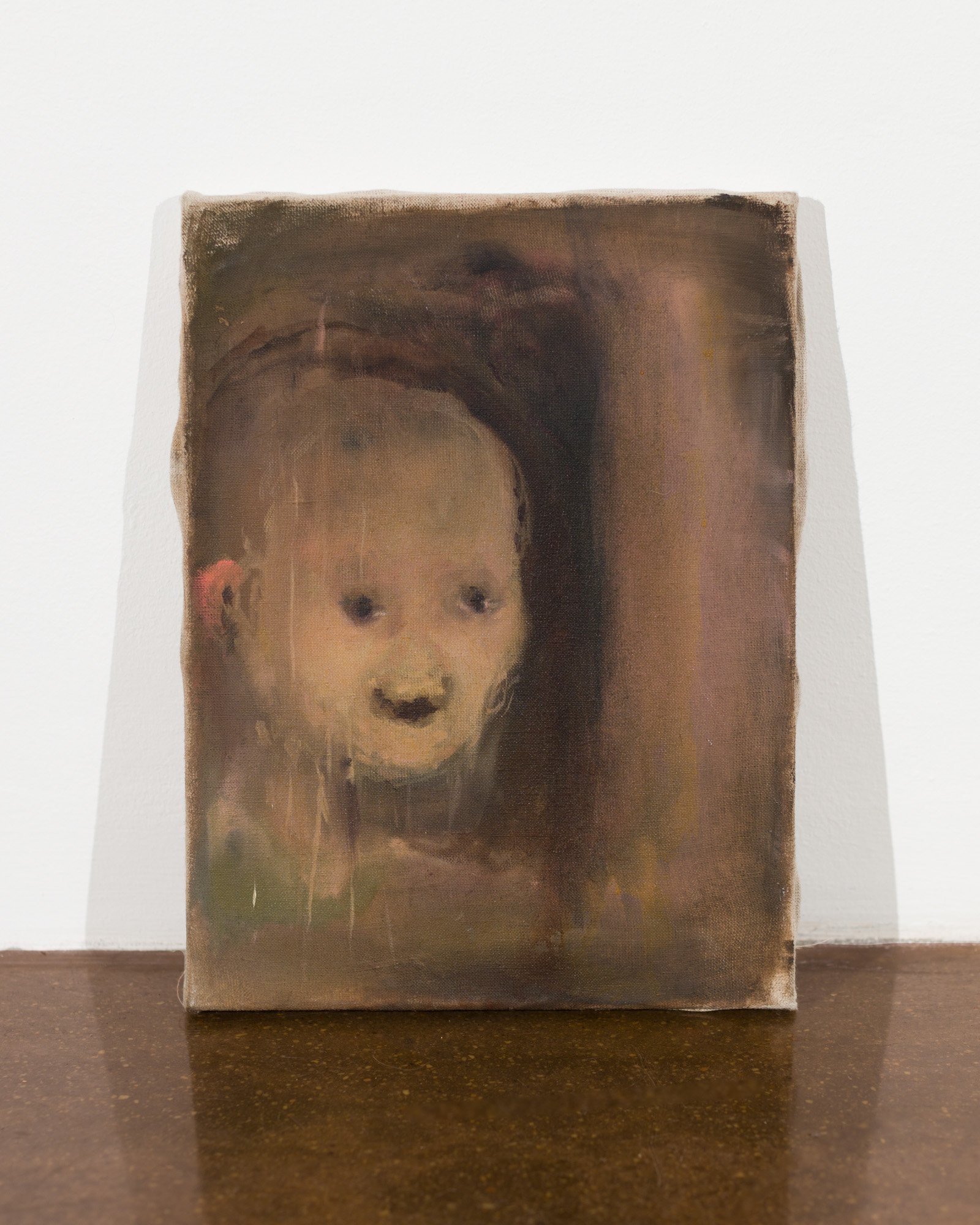Alexandra Grüner, Klára Hartlová
Vestigial
HIDDEN AVU
9. 4. 2025 / 1. 5. 2025
We are delighted to present another exhibition at HIDDEN AVU, featuring students of Academy of Arts, Alexandra Grüner and Klára Hartlová.
Vestigials—also known as rudiments—are evolutionary remnants of once-functional organs or structures that have lost their original purpose. The human appendix, atrophied skeletal tails in fish, or the now-useless body hair on people are such examples. In this exhibition, Hartlová and Grüner reinterpret vestigials not as anatomical curiosities, but as symbolic vanitas: objects that have lost their use and now carry emotional and existential residue.
A tortured plush toy nailed to a neon cross, flowers made of human hair, or a stroller filled with dirt—this is a somber parade of the decaying, the fragile, the already-forgotten. Their visual poetics echo the decadent verses of Czech symbolist Jiří Karásek ze Lvovic:
“The faded wallpaper, its garlands lost, / hangs limp in rooms where memory has mossed...”
(from the poem Old Houses).
Or again, in the ghost of an abandoned feast, we feel the sickness of abundance turned rot:
“And everywhere the stench of rot, / Decay pouring its venom on all...”
(from the poem Decomposition).
The exhibition space becomes a dark dream room—half Baroque cabinet of curiosities, half psychological stage design à la Andrzej Żuławski. It is a metaphor for the dreaming mind, where each object represents hidden desires, unspoken fears, and quiet, suffocating melancholies. Panic attacks alternate with clinical states of disintegration. The psyche is shown as both womb and execution chamber. Like a syntagma in linguistics, Hartlová and Grüner are bound by an interdependent grammar of creation, continuously evolving each other’s work.
Death appears not as an enemy but as a figure, a partner—even a friend. Much like Ingmar Bergman’s The Seventh Seal, it becomes a companion in dialogue. If Carl Rogers spoke of the “good life,” Hartlová and Grüner dare to speak of the “good death.” Their approach draws from Rogers’ theory of the phenomenal field: they externalize suppressed depressive states through visual materialization of the self. Through this radical acceptance—what Rogers called “congruence”—they embrace their inner realities.
The exhibition’s message is clear: don’t fear descending into the infernos of your own mind, no matter how dark or grotesque they may seem. The English Romantic poet William Wordsworth once wrote,
“Fear hath a hundred eyes, and all are blind / To any brightening ray...”
But neither artist shies away—they look directly into all of them.
Let us remember Nietzsche’s words: “Fear always lies.” And may we, too, find sweetness in our mortality.
“Come, sweet death, come, blessed rest.”
(J.S. Bach, BWV 478)







